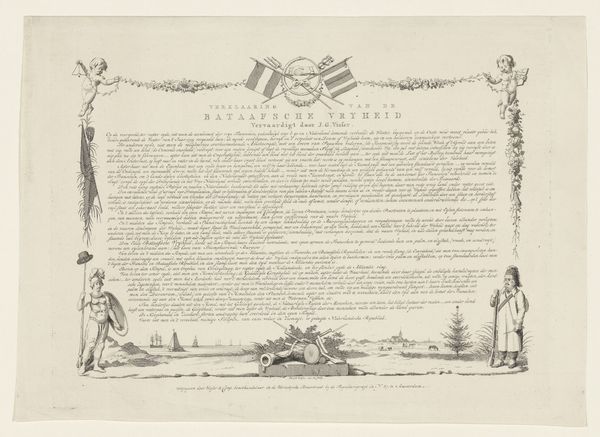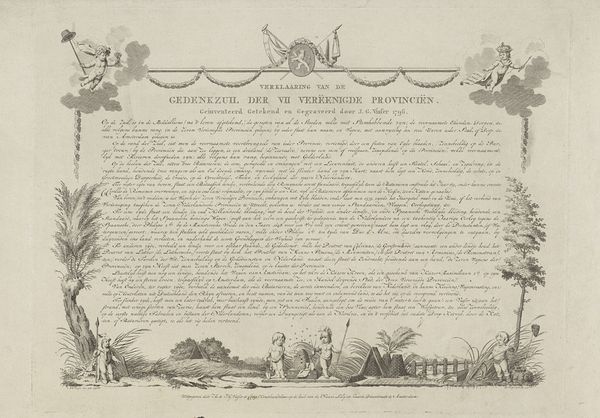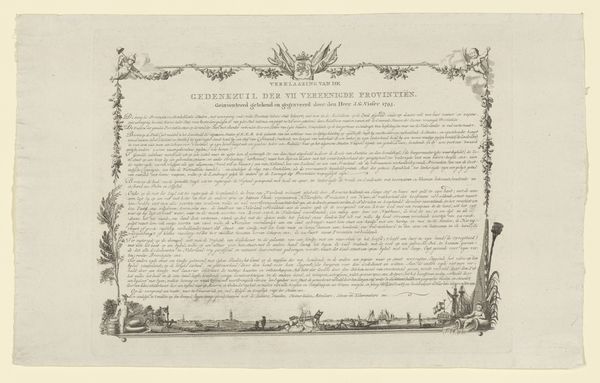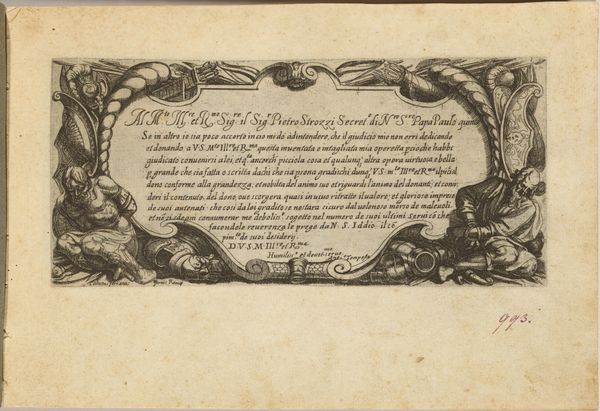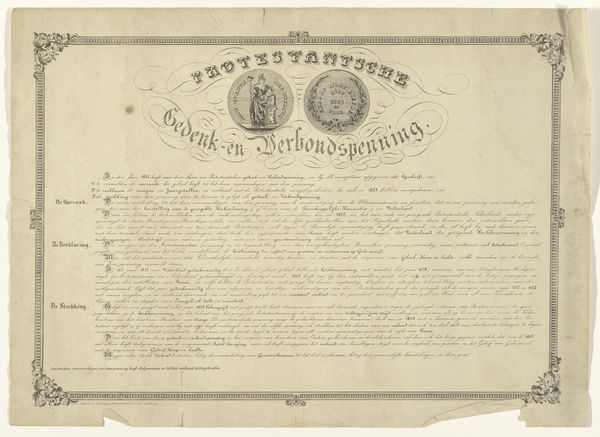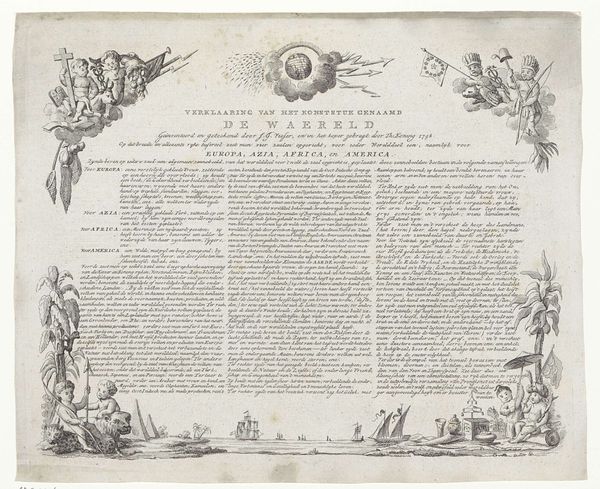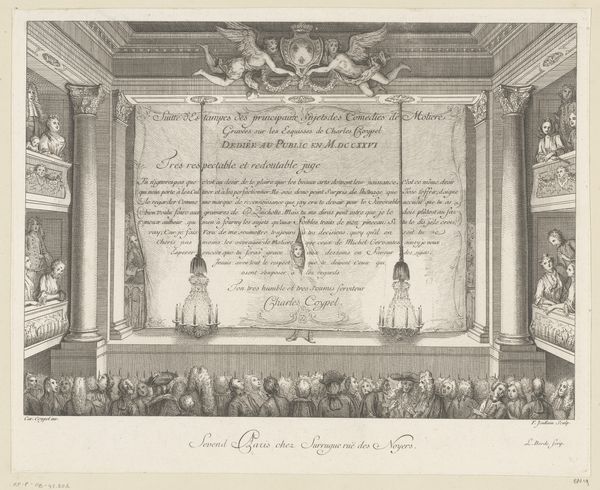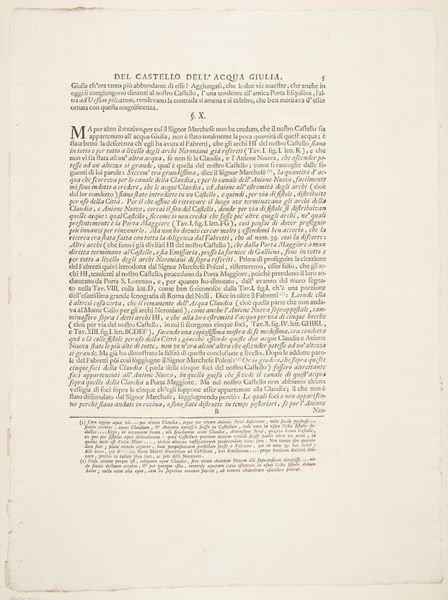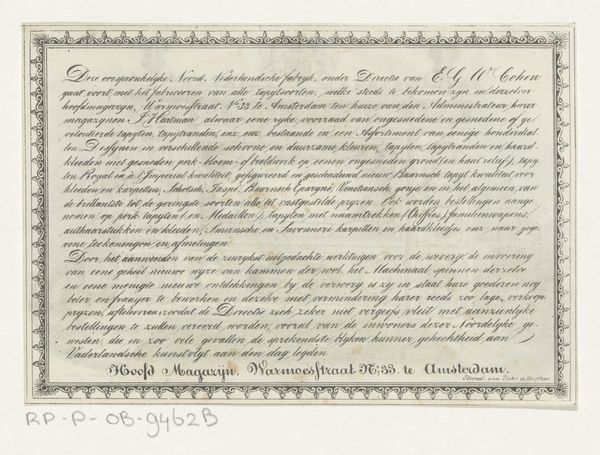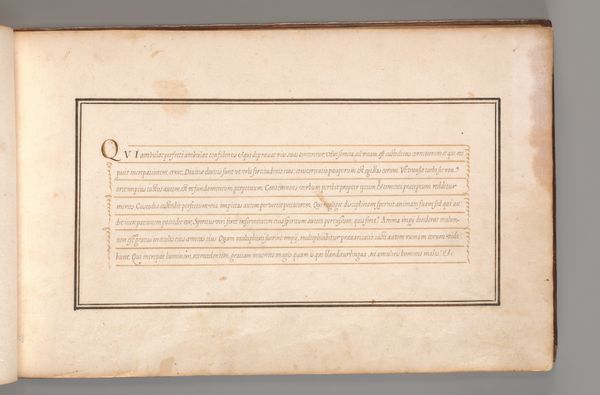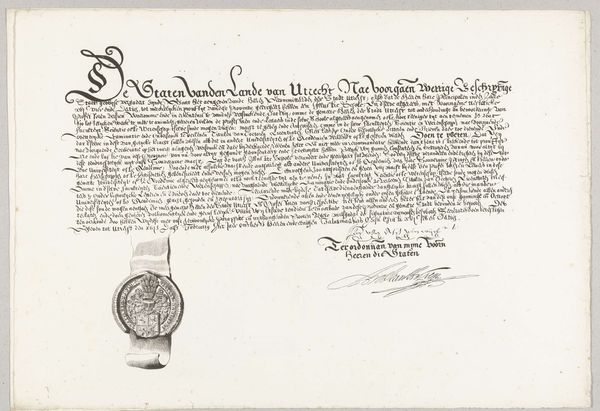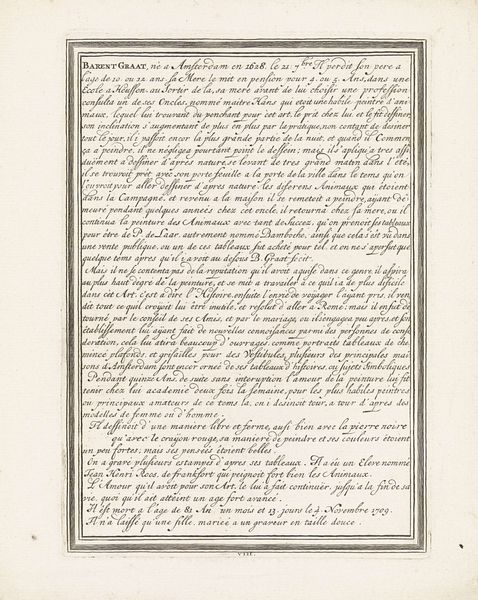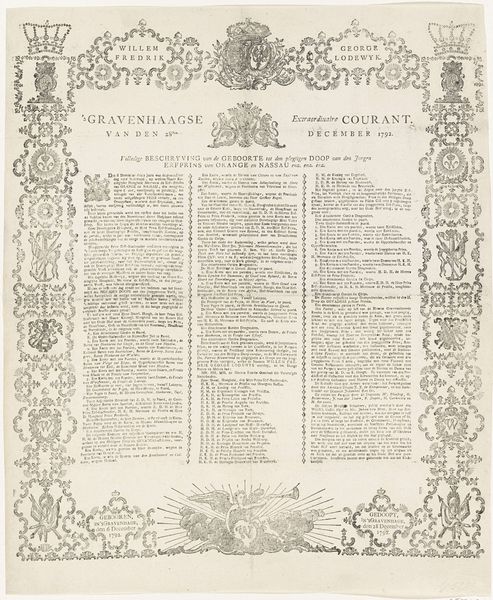
print, etching, engraving
#
neoclacissism
# print
#
etching
#
landscape
#
history-painting
#
engraving
Dimensions: height 244 mm, width 313 mm
Copyright: Rijks Museum: Open Domain
Anna Catharina Brouwer created this etching, "Explanation of the print Temple for the Netherlands," in 1794. Etching is a printmaking process using metal plates covered with a waxy ground. The artist scratches into this surface, exposing the metal, which is then bitten by acid. The longer the acid bath, the deeper the lines, influencing the print's tonal range. Brouwer's skills are evident in the fine lines and detailed imagery. The technique allows for intricate details, from the allegorical figures adorning the frame to the distant ships on the horizon, all rendered with remarkable clarity. The act of etching, however, is labor-intensive, demanding hours of meticulous work. This piece reflects the political and social context of the Netherlands in 1794, a nation grappling with internal conflict and external threats. The image within the frame presents an idealized vision of Dutch society. Brouwer’s choice of etching emphasizes the labor and skill inherent in its production. In this context, the print serves as a reminder of the craftsmanship and cultural values Brouwer sought to preserve amidst political turmoil, bridging the realms of fine art and craft.
Comments
No comments
Be the first to comment and join the conversation on the ultimate creative platform.
